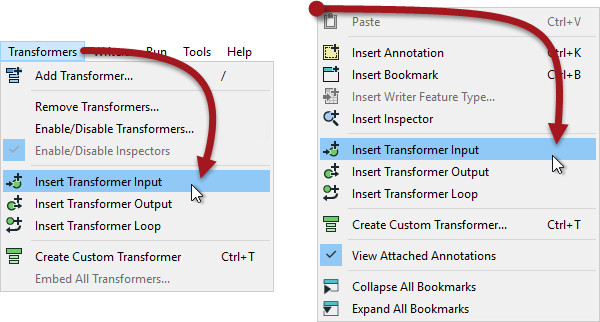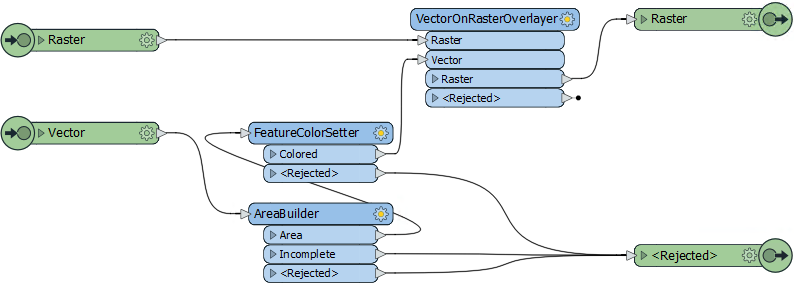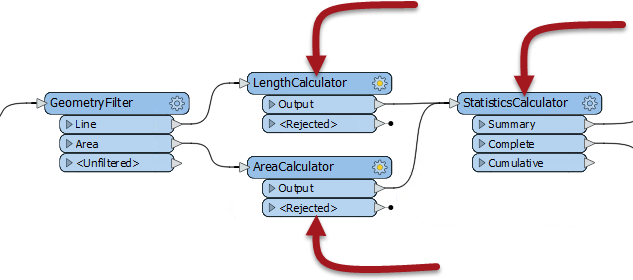Custom Transformer Input/Output Ports
Again, like a normal FME transformer, a custom transformer has a number of input and output ports:

These input and output ports are defined by input/output objects in the custom transformer definition itself:

Renaming Ports
The first thing to know is that these input/output objects can be renamed, in order that the transformer ports get named appropriately. You can either double-click the object, choose Rename from the context menu, or press F2, in order to rename the object.
For example, here the user pressed F2 and renames the input port from StringConcatenator_Input to simply Input:

Renaming the input and output ports is useful for making the custom transformer intentions more explicit; for instance, helping the user to understand what data type is required as input.
For example, after editing the transformer might look like this:

| FME Lizard says... |
|
Here the user simply renamed the input port to Input. Renaming it to "Strings", "Lines", or "Raster" (for example) would help guide other users of the transformer as to what data is required.
However, they did rename the output port to illustrate the type of data that will emerge. |
Adding or Removing Ports
Besides renaming ports, it is also possible to add new ports to a custom transformer.
To do so simply select Transformer Input (or Output) from either the menubar or the canvas context (right-click) menu:

For example, here a user has ports to handle two streams of input data and two streams of output (one port for the required output, another that handles rejected features:

This means that each instance of the custom transformer has two input and two output ports:

| FME Lizard asks... |
|
Q) Which of these is NOT a reason to use Custom Transformers?
Q) Consider this section of workspace:
|
